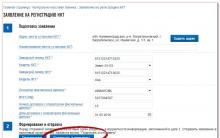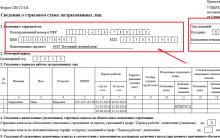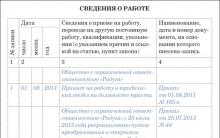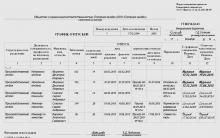Every organization that receives or spends cash is required to keep a cash book. Contrary to popular misconception, this requirement does not apply to merchants and does not apply to settlements with customers. Keeping a cash book in 2017 refers more to internal operations, such as issuing money for a report or paying wages. We will tell you how to draw up this important document without errors.
The cash book (form N KO-4) is used by all legal entities to record the receipts and cash withdrawals of the organization at the cash desk. Its form is approved, however, its use is not mandatory from January 1, 2013, as a form of the primary accounting document contained in the albums of unified forms. Therefore, each taxpayer can independently develop and apply his own form of such a document, while observing the established requirements for filling it out. We will talk about the requirements and the form that have been developed for these purposes, since their application makes it easier and more convenient to record cash transactions at the cash desk.
How to keep a cash book in 2017
In each organization, by order of the head, a person responsible for the cash desk must be appointed. If the state allows, then this is a separate cashier, if not, then, as a rule, this is the chief accountant. It is this person who must keep records of all transactions and the book. Controls the process, in any case, the chief accountant. The cash book itself is a journal, if kept in paper form, or a separate section of the accounting program, if kept in electronic form. Both methods are allowed, so let's take a closer look at each of them.
To begin with, consider the duties of a cashier, since they do not depend on the method of maintaining this accounting document and have a certain algorithm that looks like this:
- At the beginning of the shift, the cashier must open the day, that is, make an entry with the date and the amount of the balance in the cash register. This amount must always be equal to the balance at the end of the previous business day. Such operations may not be daily, therefore it is necessary to open a shift and make an entry only on the day when the funds were transferred. On other days, the balance is simply carried over.
- Each operation for the issuance or receipt of cash must be issued by an incoming cash order (PKO) or an outgoing cash order (RKO). The cashier draws up these documents, assigns numbers to them and makes a record of each of them.
- At the end of the shift, the cashier sums up the day's income and expenses, about which he makes the appropriate entries and displays the balance. Entries made during the day are certified by the signature of the performer with a breakdown of the last name, first name and patronymic. After that, the accounting document is submitted for verification and approval to the chief accountant.
This procedure is provided for each shift. These are only general requirements for maintaining a document, the basic work procedure is somewhat different, depending on the organization of the process.
Separately, it should be noted the requirements for the storage of this accounting document. All RKO, PKO, loose-leaf sheets, various checks and the journal itself must be kept in the organization for 5 years. After the expiration of this period, the documentation should be destroyed in the prescribed manner.
How to fill out a cash book: a sample of an electronic form
The easiest way is to organize the maintenance of such a document in an accounting program that reflects all accounting in the organization. This function, for example, is in 1C and other programs. In this case, the form is formed and filled out directly on the computer, the procedure for making an entry does not change: it is necessary to enter data on each PKO or RKO. At the end of the day, the cashier must sum up, withdraw the balance and print out the sheets for the day in two copies. All documents must be submitted for verification by the chief accountant, who compares the data of primary documents with the data in the registers and certifies them with his signature. Corrections and edits are not allowed.
Annually, and if the turnover at the cash desk in the organization is daily, then quarterly, the printed sheets must be formed into a magazine and flashed. The last sheet must indicate the total number of sheets and bear the signature of the head of the organization, the chief accountant and an imprint of the company's round seal, if any. In addition, you can keep the cash book completely electronically. In this case, all records must be certified by electronic signatures of authorized persons, and the information and its editing must be protected from unauthorized access using additional technical means.
Cash book: manual filling sample and filling requirements
Keeping a cash book in 2017 begins with the numbering and firmware of its sheets. The ends of the lacing at the back of the magazine must be sealed with a paper strip, on which you need to indicate the number of sheets, the date the book was started and the date it ended. To certify the record, the chief accountant and the head of the organization must sign, as well as a seal, if available. It should look like this:
On the title page, you must indicate the name of the organization and the period for which the document is open. All entries must be made only with a blue or black ballpoint pen or ink.
Each sheet is divided into two parts:
- one remains in the book;
- the second is detachable and is stored together with the RKO and PKO registers.
To fill out the sheet, the cashier places carbon paper in such a way that the pen entry is on the sheet that remains in the document. The entries must be completely identical, but you cannot put a carbon copy signature. Therefore, the cashier must sign at the end of the day on each copy. All entries on cash settlements and cash settlements are made line by line, indicating the data of the person who deposited or received the money. Income and expenditure are put down in different columns. If one sheet is not enough to reflect all transactions for one day, the cashier must fill in the "transfer" line, which records the total amount of money received and spent at that moment. The next sheet begins with the same amounts.
At the end of the day, you should sum up and indicate the total cash turnover for the day and withdraw the cash balance at the end of the day. If the cash desk contained amounts intended for the issuance of wages or benefits according to the payroll or payroll, the cashier must allocate them in the line "including wages, social payments and scholarships." After all entries are made, they are checked against primary documents and certified by the chief accountant.
A correctly completed sheet for the day looks like this:

Administrative responsibility
Violation of the cash book or its absence is an administrative offense, liability for it is provided for in Article 15.1 of the Code of Administrative Offenses of the Russian Federation, as for a violation of the handling of cash. For such an offense, the Federal Tax Service authorities may impose an administrative fine:
- in the amount of 40 thousand to 50 thousand rubles for the organization itself;
- in the amount of 4 thousand to 5 thousand rubles per head or chief accountant.











How to issue a power of attorney to represent the interests of an LLC to an individual?
How to apply for an IP: step by step instructions
Form of power of attorney to receive goods or material assets
The deadline for registering an individual entrepreneur in the tax
Business plan for a law firm: an example with calculations legal support for a business